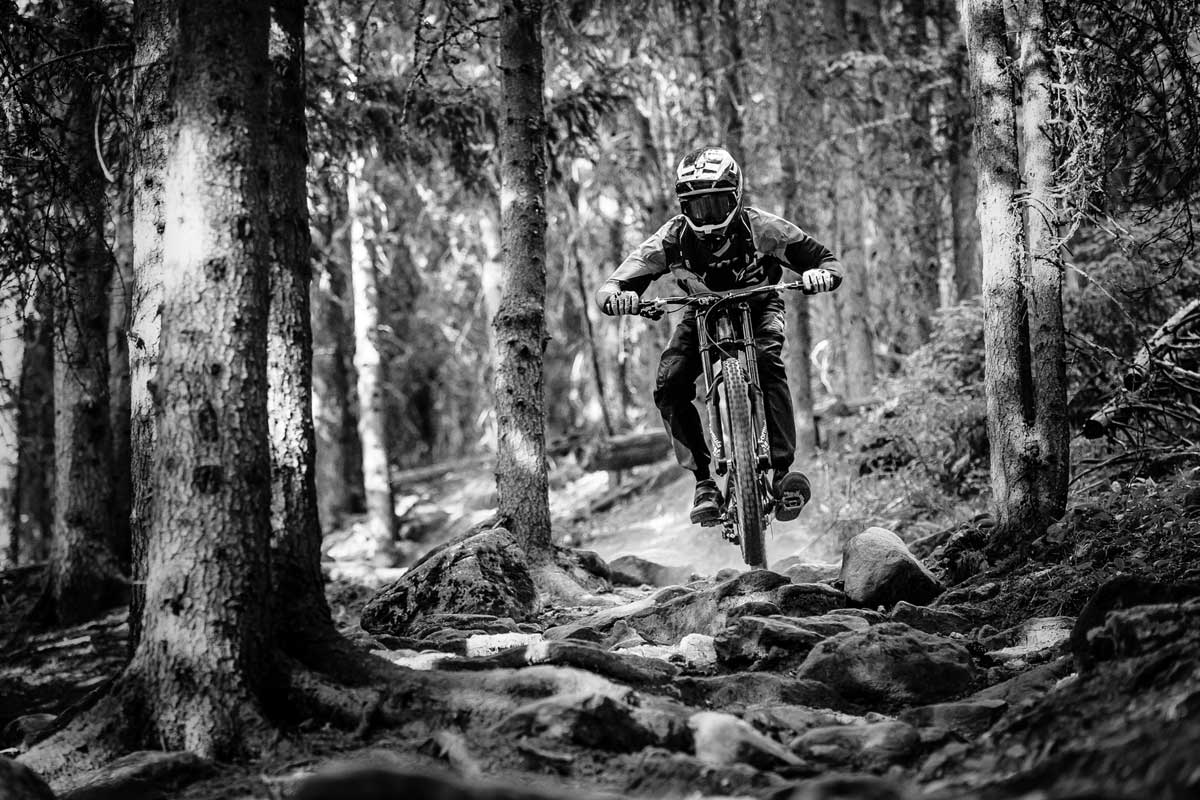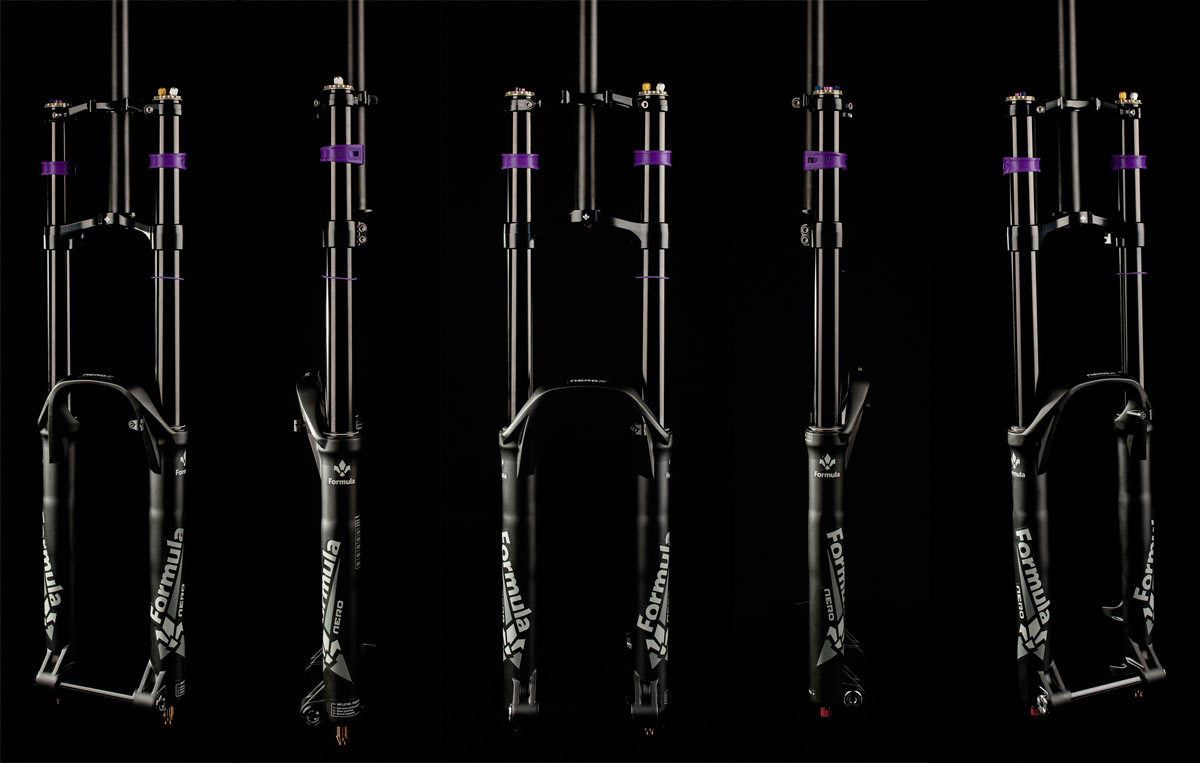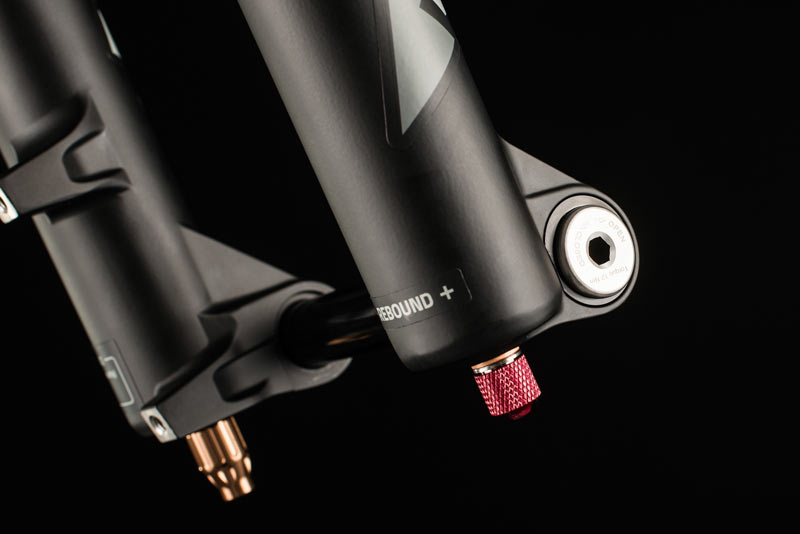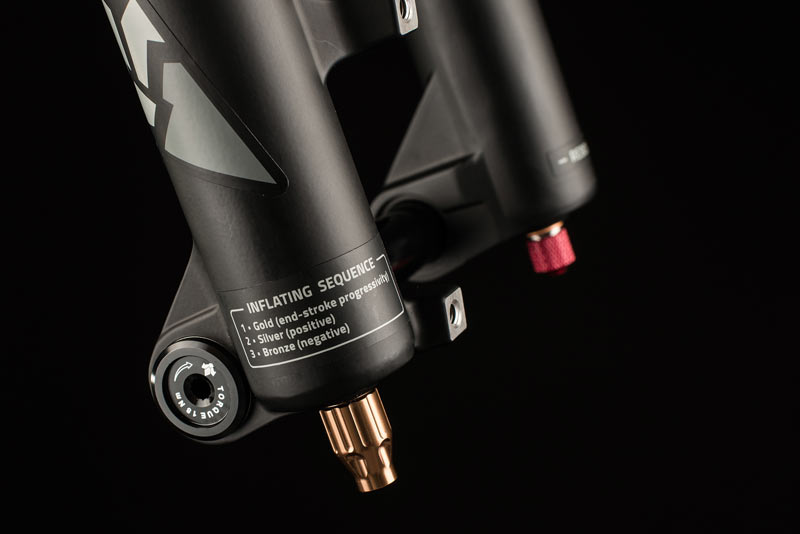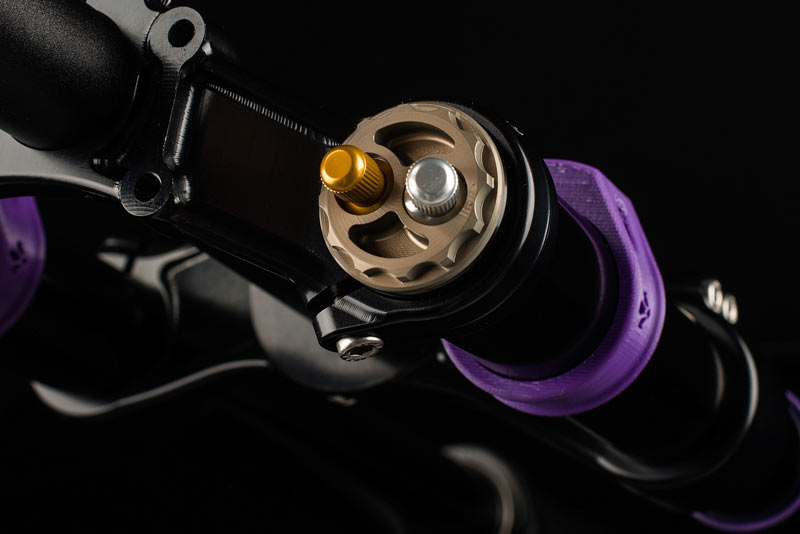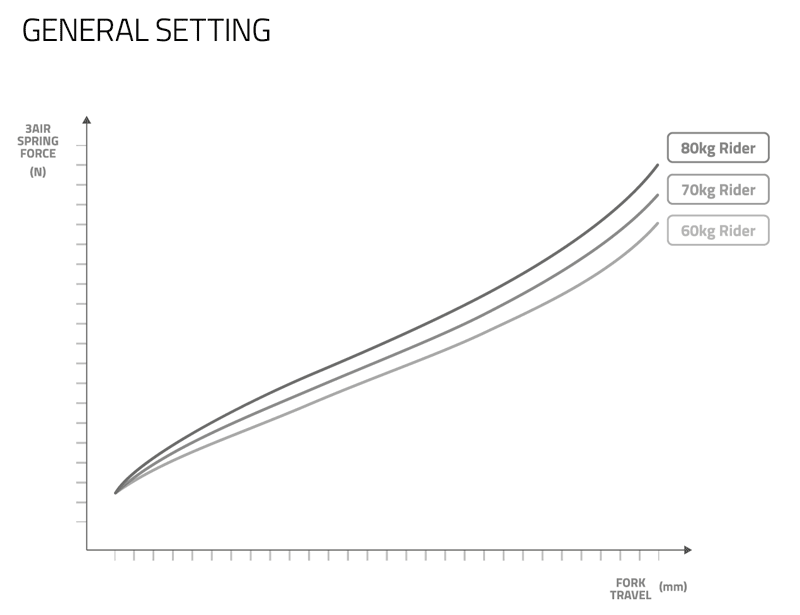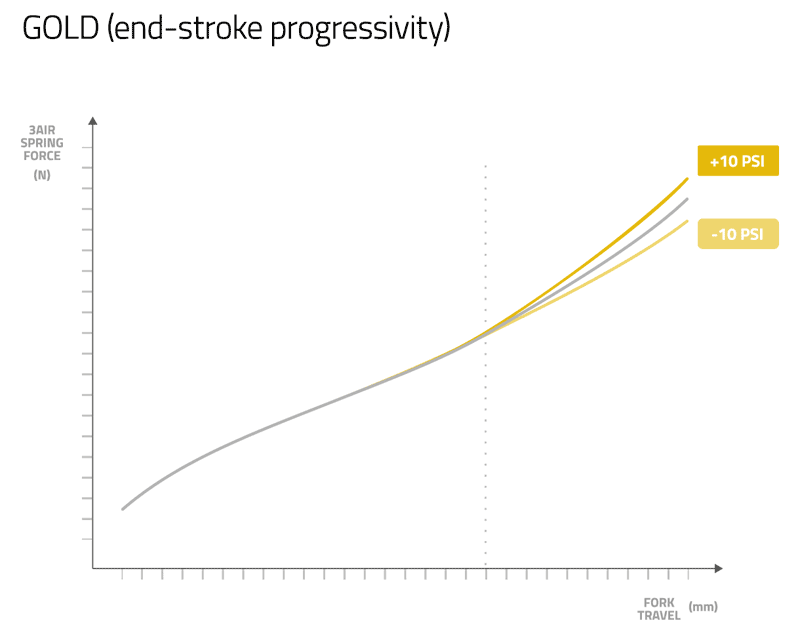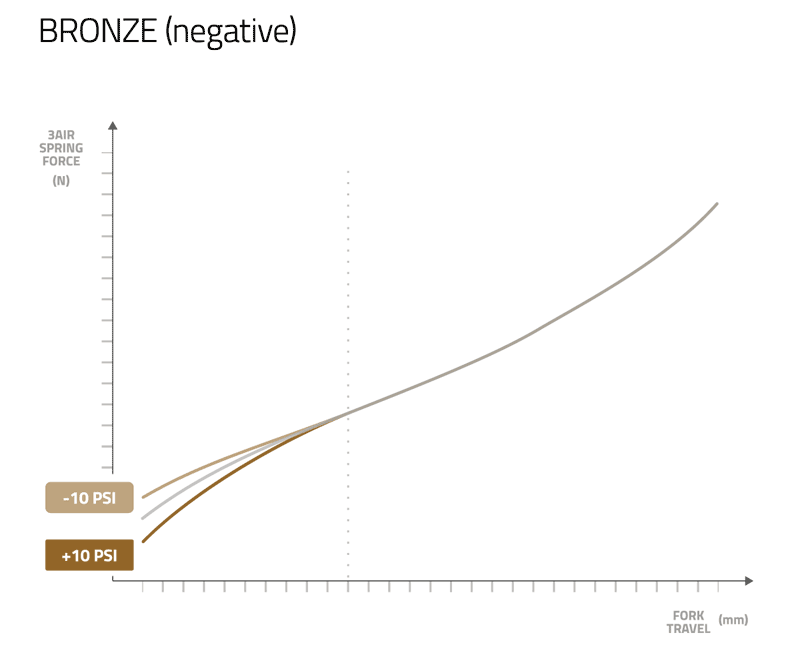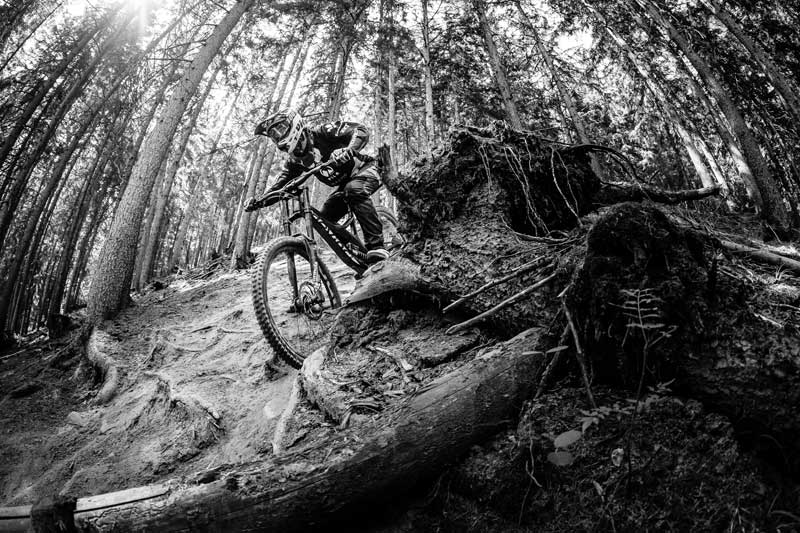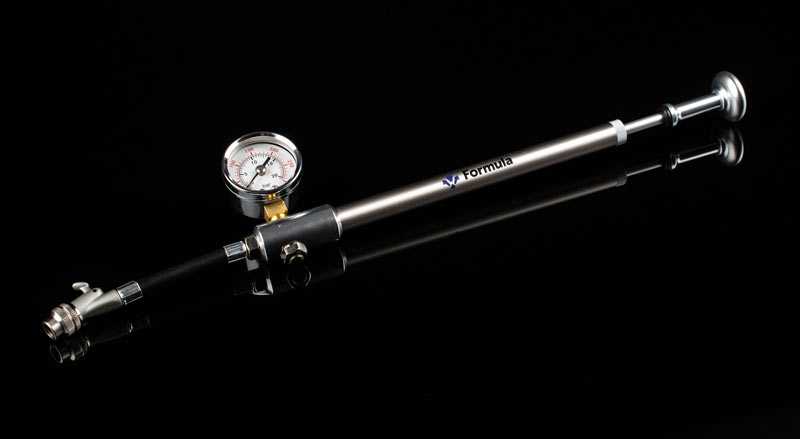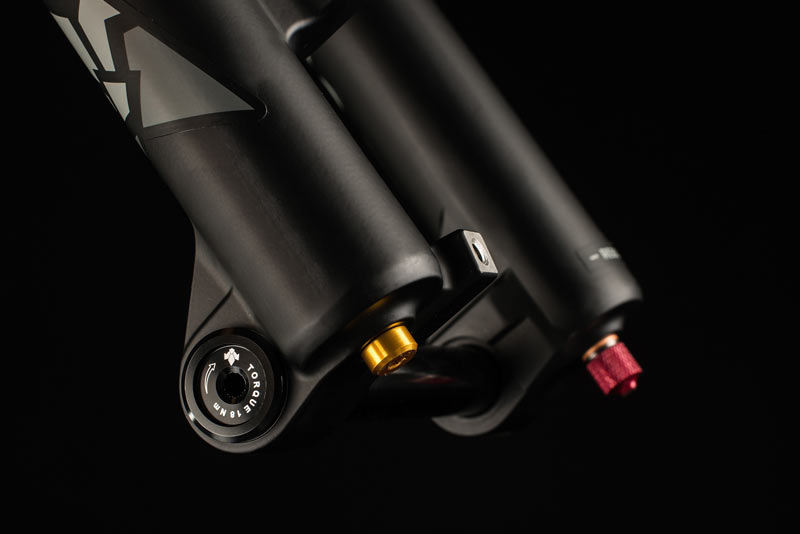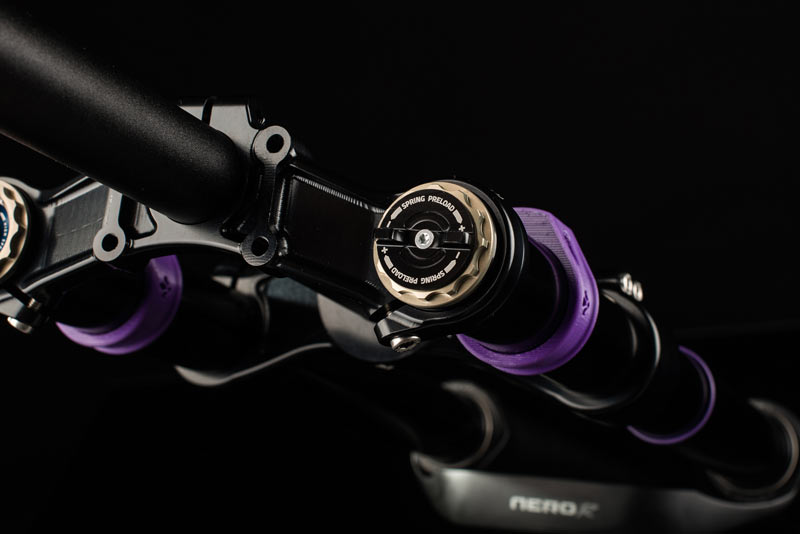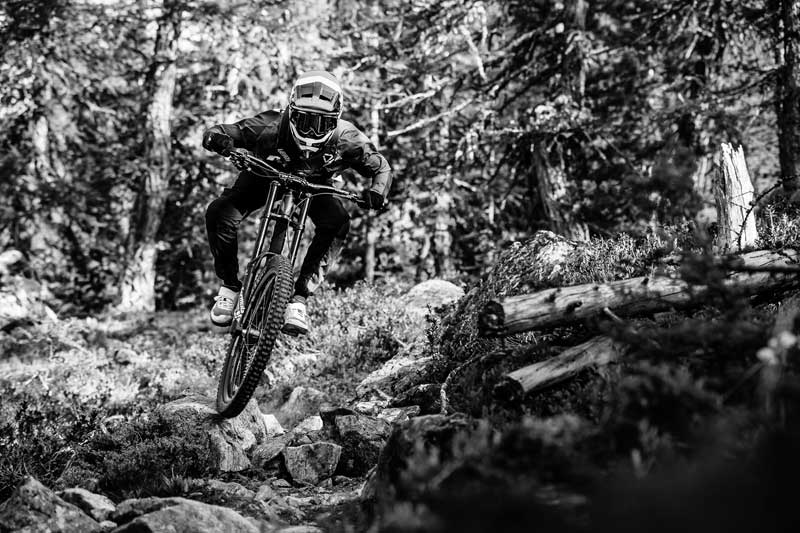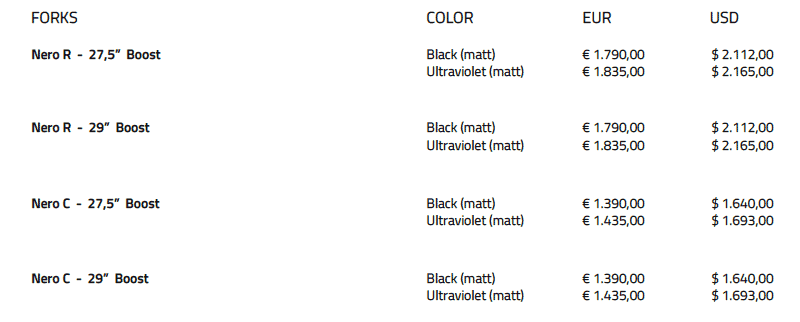The new Formula Nero dual crown downhill suspension fork pumps up customization options with three separate air chambers, high- and low-speed compression knobs and more. And it builds in their floating cartridge design to reduce stiction on an all new chassis that increases stiffness. At the bottom, there’s a clever counter-twisting thru axle that’s simple but secure.
Two versions will be offered, the Nero R with a triple air chamber, and the Nero C with a coil spring.
Both share Formula’s IFT (Internal Floating Technology), which lets the piston’s shaft have a few degrees of flex without binding or opening up their seals. When the fork flexes fore/aft, as all forks do, this prevents the shafts inside from binding, so everything continues to slide smoothly. Check out this post for internal photos that show how it works.
They also both get dual high and low speed compression adjustment knobs on the top and…
…and a low speed rebound control on the bottom.
The Nero R adds a negative air chamber at the bottom of the left leg, which is part three of their triple air chamber system. Watch the video to see it fully explained, but here’s how it works:
Inflate the gold chamber first, which fills in the top air chamber and controls the last half of the travel’s progressivity. Then fill the main air chamber with the silver valve, followed by the negative spring. Formula has another video on their website with recommendations on how to set it up, but these charts show how each chamber affects performance:
The benefit of this system is the ability to fine tune the fork to the course, rider, altitude and temperature. They say it’s easy to mimic the feel of a coil spring, but with the added bonus of end stroke control.
It’s available in both 27.5″ and 29er, with the option to reduce the 29er’s travel to 190mm or 180mm. Click to enlarge chart or any other image. Both forks come with two decal sets so you can customize the look, and the lowers are also available in Formula’s trademark purple.
It comes with a high pressure shock pump with air lock lever that minimizes pressure changes during removal.
The bottom of the Nero C simply has a retaining bolt rather than the adjustment. Notice that thru axle, though. It threads in on the left leg, then is locked into place with a counter rotating nut on the other side (visible in some of the photos above). The benefit is a much simpler thru axle than those clamped into place with dropout bolts, but they say it’s every bit as secure under the immense stresses of downhill and bike park riding.
Up top of the Nero C is a simple spring preload knob.
